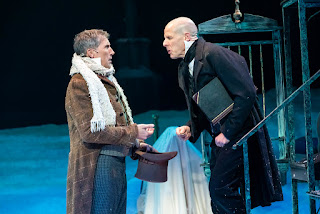Landmarks Center presents a Christmas cornucopia from Indianapolis Chamber Orchestra

There was lots of variety packed into the Christmas concert that Indianapolis Chamber Orchestra offered Sunday evening at Indiana Landmarks Center. Taking a break from its normal home at Butler University's Schrott Center and partnering with a specially recruited chorus, the ICO surveyed music of the season by five 18th- and 19th-century masters: Marc-Antoine Charpentier, Arcangelo Corelli, J.S. Bach, G.F. Handel, and Hector Berlioz. The spectrum probably compelled more trimming than desirable of the best-known selection, the Advent and Christmas portion of Handel's "Messiah." Several favorites were missing as a result, and I am used to hearing "His yoke is easy" as the chorus ending the oratorio's first part, not "Hallelujah." But for selling the show to the public, I realize that the Hallelujah Chorus was inevitable as a concert finale. I once sang in a choir that attracted a large crowd for a performance of the whole work, and watched a



